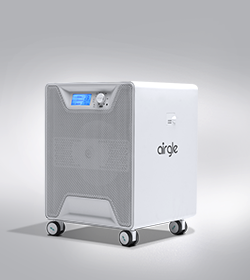Third Party Certifications
Our products have consistently earned certifications for quality and regulatory compliance from third parties and government programs.

U.S. FDA Class II Medical Device Clearance
Airgle AG300, AG600 and AG900 air purifiers are cleared by the U.S. Food & Drug Administration as Class II medical devices (product code FRA). This certification confirms compliance with FDA safety and performance standards for medical-grade air purification, authorizing their use in healthcare and institutional environments.
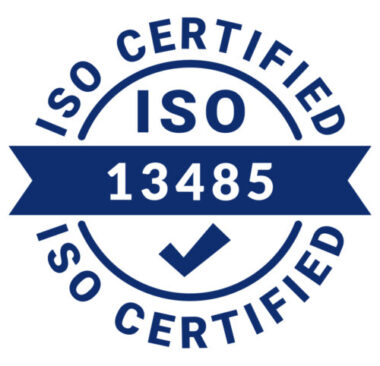
ISO 13485: Medical Device Quality Management System
Airgle Corporation is certified to ISO 13485, the internationally recognized standard for medical device quality management systems. This certification demonstrates Airgle’s commitment to rigorous manufacturing, traceability, and regulatory compliance processes—ensuring every Airgle air purification system meets the highest standards of safety, reliability, and performance for healthcare environments worldwide.
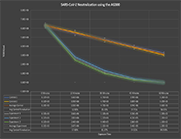
Biosafety Level 3 ( BSL-3) Laboratory
BSL-3 laboratories are used to study infectious agents or toxins that may be transmitted through the air and cause potentially lethal infections. Researchers perform all experiments in a biosafety cabinet. BSL-3 laboratories are designed to be easily decontaminated. As an additional safety measure, these laboratories must use controlled, or “directional,” air flow to ensure that air flows from non-laboratory areas (such as the hallway) into laboratory areas. Other engineered safety features include a requirement for entry through two self-closing, interlocked doors, sealed windows, floors and walls, and filtered ventilation systems. BSL-3 labs must also be equipped to decontaminate laboratory waste using an incinerator, an autoclave, and/or another method of decontamination, depending on the biological risk assessment.

AHAM (Association of Home Appliance Manufacturers)
The AHAM Verifide® certification confirms that an air cleaner’s performance has been independently tested and verified for its Clean Air Delivery Rate (CADR) for tobacco smoke, dust, and pollen, ensuring it meets the manufacturer’s stated room size and performance claims.

California Air Resources Board
California’s Air Cleaner Regulation (AB 2276) requires all indoor air cleaners sold in the state to be certified by CARB, ensuring electrical safety and limiting ozone emissions to no more than 0.050 ppm (50 ppb).
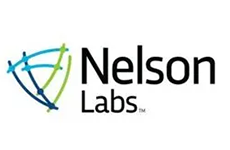
Nelson Labs
Nelson Labs®, a Sotera Health company, is an industry-leading, global provider of laboratory testing and expert advisory services. Nelson Labs® performs over 800 rigorous microbiological and analytical laboratory tests across the medical device, pharmaceutical, protective barriers, and tissue industries. We know that every test matters and requires solutions to complex problems to improve patient outcomes and minimize client risk.

ETL Listed Mark
The ETL Listed Mark, issued by Intertek, certifies that a product complies with North American safety standards and is recognized by authorities across the U.S. and Canada as proof of compliance.
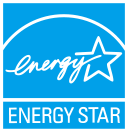
Energy Star Certification
The ENERGY STAR certification, managed by the U.S. EPA, identifies products that meet strict energy efficiency and performance standards verified through third-party testing in accredited laboratories.

American Council for Accredited Certification
Established in 1992, the ACAC is the only certifying body in the IAQ field and has independent third-party accreditation from the Council of Engineering and Scientific Specialty Boards (CESB).

PSE Mark
Electrical Appliance and Material Safety. The PSE Law and its regulations specify mandatory electrical safety and EMI requirements for electrical products sold in Japan.

KRCES
The Kitasato Environmental Science Center was established in April 1977 with the Environmental Health Research Center of the Kitasato University Faculty of Health as its parent body, and is currently engaged in a wide range of projects in the field of environmental science.

KC Mark Certification
The KC (Korea Certification) mark signifies compliance with Korea’s product safety requirements for electrical and electronic equipment and is issued by Korea-based certification bodies that have been approved by the Korea Standards Association. Manufacturers and distributors of electronic goods may apply a KC mark to their goods once they have completed the standard procedure.

Korea Air Cleaning Association
The Korea Air Cleaning Association was established in 1996 as the Korea Air Purification Research Association and since its establishment, it has contributed to the development of the air industry within the cleanroom and indoor environmental sector. KACA develops testing methods and product standards in the air purification industry in cooperation with experts and accredited testing institutes.

IEC / CB
The IEC System for Conformity Assessment Schemes for Electrotechnical Equipment and Components (IECEE) Certification Body (CB) Scheme is the world’s first international system for the mutual acceptance of product safety test reports and certificates for electrical and electronic equipment, devices, and components.

CE Mark
The CE Mark signifies that a product meets EU safety, health, and environmental protection requirements, allowing it to be sold throughout the European Economic Area.

SGS
SGS Nationally Recognized Testing Laboratory (NRTL) labs provide electrical and electronic (E&E) testing and certification services for the US and Canadian markets. The SGS North America Listed Mark is widely accepted throughout the US and Canada by retailers and Authorities Having Jurisdiction (AHJs). SGS is officially recognized by the Occupational Safety and Health Administration (OSHA) as a Nationally Recognized Testing Laboratory (NRTL) in the US and is accredited by the Standards Council of Canada (SCC).

International Organization for Standardization
ISO 9001 is defined as the international standard that specifies requirements for a quality management system (QMS). ISO Standards make the world a cleaner, safer and more efficient place to live. The ISO 9001 Standards are international requirements that organizations use to demonstrate the ability to provide products and services that meet regulatory and statutory requirements so that we can continue to live in a world that is safe, clean and efficient.

DTI
Danish Technological Institute (DTI) is an independent and non-profit research and development institute. Since 1906 the Institute has worked to promote the application of technological advances, for the benefit of both the individual business and the continued development, growth and prosperity of society as a whole.
FEHD
Established on January 1st, 2000, the Food and Environmental Hygiene Department (FEHD) is a department of the Hong Kong Government, reporting to the Environment and Ecology Bureau. It is responsible for environmental hygiene services and facilities. The FEHD delivers its services through the Centre for Food Safety, Environmental Hygiene Branch, and Administration and Development Branch.

SASO - Certificate of Conformity
The SASO Certificate of Conformity (CoC), is a requirement for all regulated products exported to Saudi Arabia to ensure that they comply and conform to the relevant technical regulations covered by the Saudi Standards, Metrology and Quality Organization (SASO). It ensures that the product meets the Kingdom 2030 vision objectives in regards to developing the economy and trade methods that provide a quality lifestyle for Saudi citizens.




